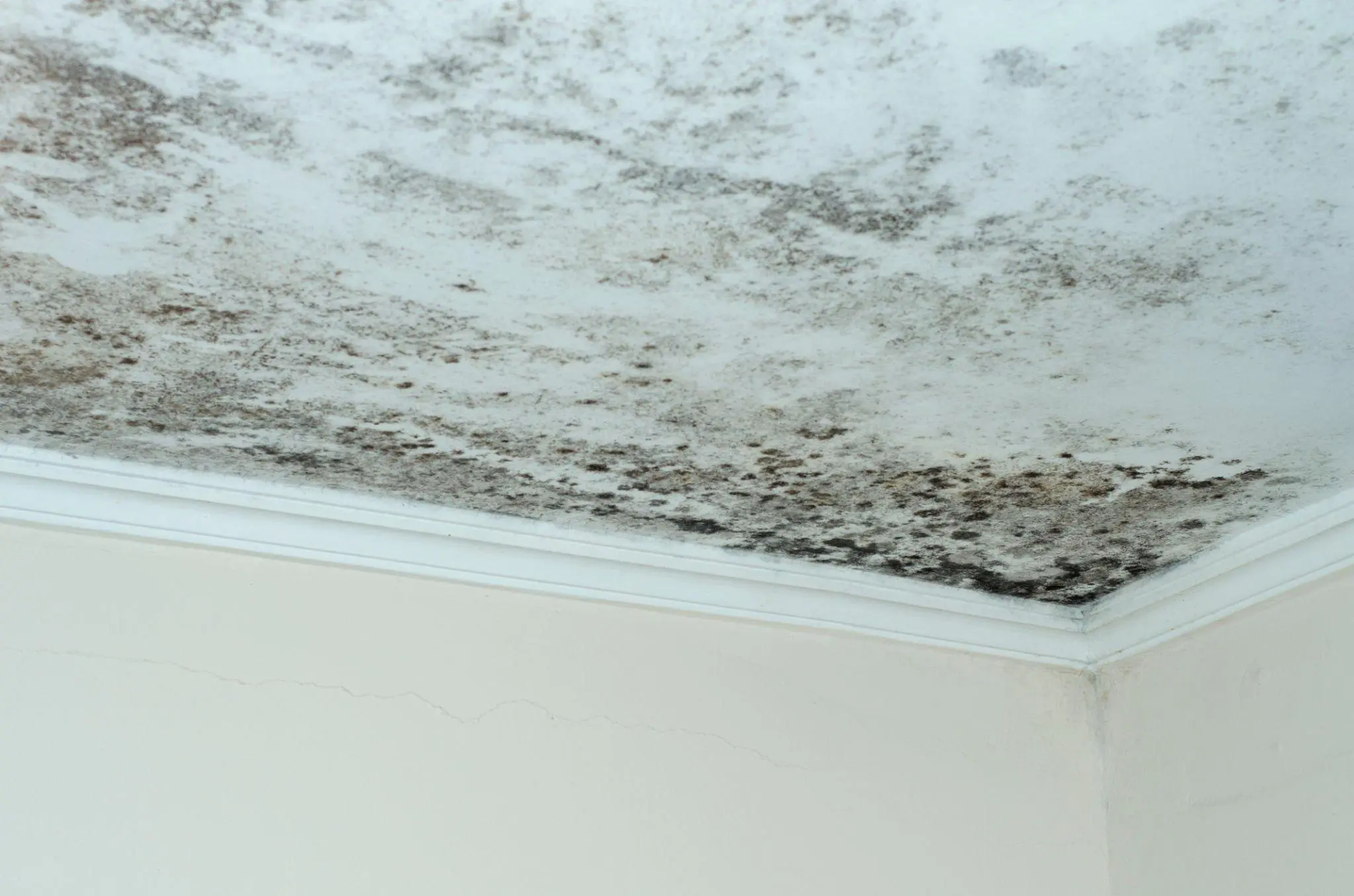
If you’ve ever noticed unsightly mould creeping across your ceiling, you’re not alone. Mould in ceiling areas is a common problem that can be caused by various factors. In this article, we’ll discuss what mould in the ceiling means, why it happens and most importantly, how to effectively get rid of it.
The Dangers of Mould in Ceiling
Mould in the ceiling is more than just an eyesore; it’s a sign of underlying issues that need attention. When you spot mould on your ceiling, it typically indicates excess moisture and poor ventilation. This moisture can seep into the ceiling materials and provide the perfect environment for mould to thrive.
Beyond its unsightly appearance, mould in the ceiling can pose health risks. The spores released by mould can exacerbate respiratory problems and allergies, leading to coughing, sneezing and skin irritation. Additionally, mould can weaken the structural integrity of your ceiling over time, which can be a significant safety concern.
What Are the Causes of Mould on Bedroom Ceiling?
To effectively address mould in the ceiling, it’s crucial to identify and address the source of the issue. Here are some common causes:
- Leaking Roof: A damaged or leaking roof can allow water to seep into your ceiling and create the ideal conditions for mould growth.
- Poor Ventilation: Inadequate airflow in your home can lead to moisture buildup, making it easier for mould to thrive.
- Humidity: High indoor humidity levels can promote mould growth. Ensure proper ventilation and consider using a dehumidifier if needed.
How to Get Rid of Mould in Ceiling
Dealing with mould on ceilings may seem daunting, but it’s a problem that requires expert attention. Here’s what you can do:
Safety Priority
Your safety comes first. When dealing with mould in your ceiling, prioritise your well-being. Mould spores can be harmful when inhaled, so avoid attempting DIY removal. Instead, contact certified mould removal specialists who are equipped with the necessary safety gear and expertise to handle the situation safely.
Consult the Experts
When you encounter mould in your ceiling, it’s best to consult professionals trained in mould removal. These experts have the knowledge and experience to assess the extent of the problem and employ the right techniques to safely and thoroughly remove the mould. They will also identify any underlying issues that may be contributing to the mould growth, such as leaks or poor ventilation, ensuring a comprehensive solution.
Here are some signs it’s time for home mould removal:
- Musty odour
- Peeling paint
- Warped walls
- Patchy surfaces
- Allergic reactions.
Address the Source
Effective mould removal goes beyond just eliminating visible mould. You need to address the source of the issue to prevent future infestations. Mould removal experts not only eradicate existing mould but also address the root causes. This may involve repairing leaks in your roof or plumbing, improving ventilation systems or identifying and mitigating other factors contributing to excessive moisture in your home.
Professional Prevention
To safeguard your home against future mould problems, consider professional mould prevention solutions. Mould removal experts like us at The Mould Doctor offer anti-mould solutions to your ceiling and other susceptible areas. These treatments act as a barrier that inhibits mould growth and provides long-term protection for your home.
Frequently Asked Questions
Q: Is mould on ceiling dangerous?
A: Mould on the ceiling can be a health concern, as mould spores can trigger respiratory issues and allergies. While not always immediately dangerous, it’s essential to address it promptly to prevent health problems and structural damage.
Q: How can I stop mould on my ceiling?
A: To prevent mould on your ceiling, maintain proper ventilation, control indoor humidity, fix any leaks and ensure your home is adequately insulated. Regularly clean and inspect your ceilings for signs of moisture and mould.
Q: Why am I getting mould on my ceiling?
A: Mould on the ceiling is often due to excess moisture, which can result from leaks, poor ventilation, high indoor humidity or inadequate insulation. Identifying and addressing the source of moisture is crucial to prevent recurring mould issues.
Q: How do you get rid of mould on ceiling in the bedroom?
A: To remove mould on the bedroom ceiling, prioritise safety. Wear protective gear and consult mould removal professionals for effective and safe removal. They will address the mould and underlying causes, such as leaks or ventilation issues.
Q: Can condensation cause mould in the ceiling edges?
A: Yes, condensation can contribute to mould growth on ceiling edges. When warm, moist air contacts cooler surfaces, like the ceiling, it can lead to condensation, creating a suitable environment for mould. Proper ventilation and insulation can help mitigate this issue.
Q: Is it safe to sleep in a room with mould on the ceiling?
A: Sleeping in a room with mould on the ceiling is not recommended, as mould spores can be harmful when inhaled. It’s best to avoid the room until the mould is safely removed by professionals.
Need Mould Gone? We’ve Got You Covered!
Don’t risk your health or the integrity of your home by attempting to handle mould in your ceiling on your own. Trust the expertise of certified mould removal professionals who can safely and effectively address the issue while providing long-term solutions to keep your home mould-free.
If you’re dealing with mould in your ceiling and need expert assistance, The Mould Doctor is here to help. Our team of highly trained technicians follows IICRC world standards for mould remediation. We provide top-notch mould removal services in Victoria and New South Wales and ensure your home is mould-free and safe.
Contact us today to learn more about our services and how we can restore your home to a healthy, mould-free environment.